I’ve always been a fan of trying new and unique flavors, and taro milk tea has recently caught my attention.
For those of you who haven’t heard of this intriguing drink, taro milk tea is a popular Taiwanese beverage made with taro root. This drink is not only a delicious treat, but it also packs some amazing health benefits and looks visually stunning.
When I first tried taro bubble tea, I was greeted with a delightful mix of flavors. The drink has a sweet, nutty flavor with hints of caramel, vanilla, and even a subtle taste of sweet potatoes when taro is cooked.
Each sip left me craving more, and I couldn’t help but be fascinated by the unique flavor profile that taro milk tea offers.
So it’s no wonder that this drink has become popular worldwide. And now I’m very excited to tell you all about it!
What is Taro Milk Tea?
Taro milk tea is a delicious, creamy drink made with taro root, which is widely enjoyed in Southeast Asia and is gaining popularity in the Western world. Taro is a starchy root vegetable with a slightly nutty taste that matches very well with the creaminess of milk tea.
So why is taro milk tea purple?
The taro root itself varies in color from white to lavender or even purple. When taro is cooked or processed into powder, it often takes on a purple hue.
Sometimes even food coloring is added to taro powder to enhance the visual appeal and make it more attractive.
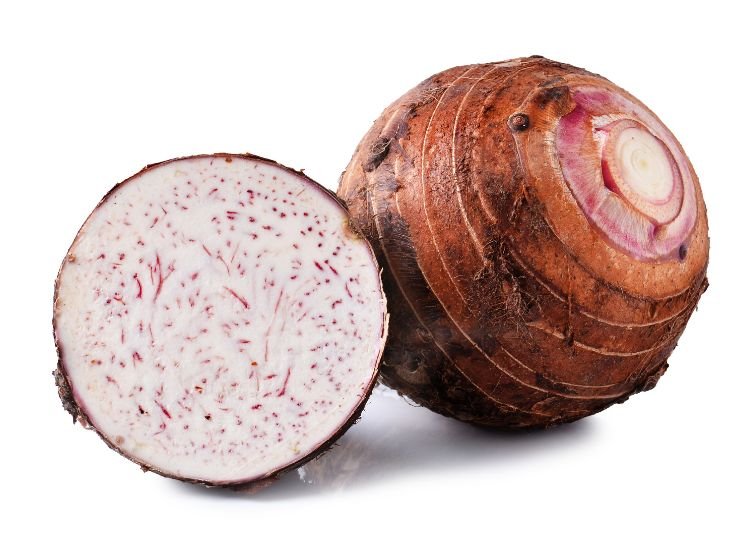
In my experience, the taste of this purple milk tea is just as amazing whether it has a light lavender color, a bright purple hue, or even if it’s nearly white. So, don’t be deceived by the color — it’s still a fantastic-tasting treat!
Now, you might be wondering what’s the difference when comparing taro vs ube. While these two root vegetables are similar in many ways, they also have some notable differences. Ube has a darker purple tint when cooked and the flavor is a bit sweeter.
Yet, both are delicious when used to flavor boba tea!
Taro Milk Tea Taste Profile
Taro boba tea has a unique and enjoyable flavor profile that sets it apart from typical milk teas. The taste of taro root, its sweetness, distinct aroma, and creaminess come together to create a refreshing and satisfying drink.
When I think of taro milk tea, I’m often reminded of its special taste that sets it apart from other milk tea flavors. Taro root itself tastes a bit like a potato and has been compared to buttered popcorn jelly beans. It also has a nutty flavor when cooked, similar to sweet potatoes.
However, it’s important to note that the taste may vary depending on whether real taro root or taro milk powder is used.
Is Taro Sweet?
I’ve noticed that taro milk tea tends to be delightfully sweet. This sweetness comes from the natural flavor of taro root, as well as the creamer and sweetener typically added to the tea.
Some even describe it as having a creamy vanilla flavor, as well as being cookie-like or cereal milk-like to some extent.
Taro Root Smell
As far as the smell is concerned, taro root has a distinct scent that might make you think of earthiness or even nuts.
This aroma is not overpowering but rather mild and pleasant, which contributes to the overall enjoyable experience of sipping taro milk tea.
Creaminess and Texture
When I drink taro milk tea, I appreciate its creaminess and texture. This drink usually has a rich, smooth consistency, which is enhanced by the addition of creamer and a dairy component.
The texture of the tea might also be influenced by the presence of taro milk powder or real taro root. Some taro milk teas might have tiny bits of taro root blended into the drink, offering a slightly more textured experience compared to smoother taro milk powders.
Popular Taro Milk Tea Variations
Since trying taro milk tea, I’ve come to appreciate its versatility with different variations. Each has its unique qualities, and experimenting with flavors and textures has given me a fresh take on this delicious beverage.
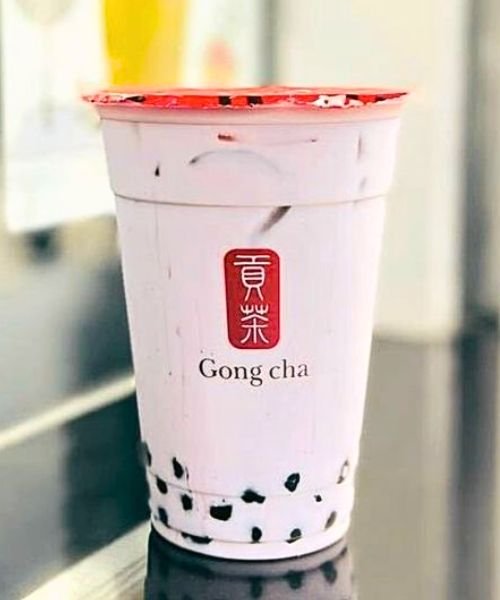
Many bubble tea chains like Gong Cha have taro flavored options in their menu and some of the best drinks at Tiger Sugar and Coco milk tea best sellers include it as flavoring.
So, whether you’re a fan of the classic taro milk tea, craving a cooler taro smoothie, or in the mood for a warm and cozy taro latte, there’s a taro beverage for everyone to enjoy.
Here are the three most popular taro milk tea variations:
1. Classic Taro Milk Tea
The classic taro milk tea usually has a light brown color and is often served cold, making it the perfect treat for hot summer days.
When I first tried taro milk tea, I was amazed by its distinct flavor profile. The taro root imparts a creamy, earthy taste, complemented by the milk’s richness.
When combined with black, green, or oolong tea, the result is both sweet and nutty, making it a delightful experience for bubble tea enthusiasts like myself.
You should note, however, that sometimes taro milk tea doesn’t contain any tea.
2. Taro Smoothie
In addition to the classic taro milk tea, there’s the taro smoothie, which is another favorite of mine. This variation typically combines brewed tea, taro powder, coconut milk, simple syrup, and a pinch of salt.
To make the smoothie, you blend these ingredients until smooth, then add in cooked tapioca pearls for that satisfyingly chewy boba experience. It’s an excellent option for those who prefer a thicker, creamier texture compared to the traditional taro milk tea.
3. Taro Latte
Another variation that I enjoy is the taro latte. While similar to the taro milk tea, this beverage generally leans more towards the taste and consistency of a traditional latte.
To make a taro latte, fresh taro is typically steamed and blended with milk and a sweetener, resulting in a creamier and frothier texture compared to the classic taro milk tea. The flavor can vary depending on the type of milk used, but it generally retains that signature sweet and nutty taste.
Health Benefits and Considerations
As someone who loves taro milk tea, I’m always curious about its health benefits and potential considerations.
So let’s dive into some of the nutritional aspects of taro milk tea and any possible allergies that one should be aware of.
Nutritional Content
Taro milk tea has some great nutritional benefits, due to the taro root itself.
Taro root is quite rich in nutrients, such as:
- Manganese, which contributes to bone health and blood clotting.
- Fiber, which has numerous digestive benefits and can help stabilize blood sugar levels.
- Good carbohydrates, which provide energy and may also contribute to stable blood sugar levels.
- Antioxidants, which have many benefits and may help with preventing cancer.
- Moreover, taro milk tea is also a good source of calcium, potassium, and vitamins E and B6.
It’s important to keep in mind that these nutritional benefits will vary depending on the specific recipe used, especially when it comes to taro powder versus fresh taro.
Potential Allergies
While taro milk tea is generally safe to consume for most people, it’s essential to be aware of potential allergies or sensitivities. Those with milk allergies or lactose intolerance should be cautious, as taro milk tea typically contains dairy products.
Another aspect to consider is the possibility of a reaction to taro root itself. While not as common, some individuals might have an allergy or sensitivity to taro. In case you’ve never tried taro milk tea or taro root before, it’s wise to start with a smaller serving to see how your body responds.
So there you have the most important health benefits and considerations to keep in mind when enjoying taro milk tea.
Drink up and savor the unique taste, while also being mindful of your body’s needs!
Does Taro Milk Tea Have Caffeine?
I’ve sometimes wondered if the taro milk tea that I just ordered from a bubble tea shop has caffeine or not.
Often times it indeed contains caffeine, primarily because it’s usually made with a tea base such as black or green tea. The amount of caffeine in taro milk tea, however, can vary depending on the tea recipe and the type of tea used.
A typical serving of taro milk tea contains approximately 25-30 mg of caffeine, which not that much. For example, a cup of coffee averages at 100 mg of caffeine.
On the other hand, there are variations of taro milk tea with different caffeine levels. Some versions of taro milk tea have no caffeine while others made with special green tea or black tea leaves can have up to 40 mg of caffeine per serving.
So, next time you try taro milk tea, you know that it contains some caffeine if it’s made with a tea base. However, the amounts are moderate compared to many other popular caffeinated drinks.
Just remember that depending on the tea leaves used and the particular recipe, the caffeine levels might vary a bit.
How to Make Taro Bubble Tea at Home?
I think that the best way to make taro bubble tea is to use fresh taro root instead of taro powder. But if you want to make things a bit easier you can just use the powder instead. Just note that most taro ready-made taro powders already have sweeteners added to them.
Here is an easy recipe for home-made taro milk tea:
Ingredients:
- 100 g taro root (peeled)
- 2 tsp sugar (or more if you like it very sweet)
- 2 tbsp tapioca pearls
- ½ cup strongly brewed tea (black, green, or oolong tea)
- ½ cup whole milk (or plant-based milk)
- 1 teaspoon condensed milk
Instructions:
- Cut the taro into cubes and boil for about 20 minutes until soft enough to poke through with a fork.
- While the taro is cooking you can brew some strong tea.
- Remove the taro from the water and mash it to make a paste with an even consistency. Add one teaspoon of sugar and mix it into the paste.
- Boil some water and add the boba pearls and one teaspoon of sugar. Let it boil for about 5 minutes. The boba pearls are ready when they start to float. Remove the boba from water when done.
- Mix your brewed tea with the taro paste, milk, and condensed milk.
- Pour into a large glass with plenty of ice and add the tapioca pearls. Serve the taro milk tea with a thick straw.
Final Thoughts on Taro Milk Tea Flavor
Taro milk tea is a sweet and creamy beverage with a unique flavor that’s gaining popularity worldwide.
You can order it in many bubble tea shops but making it at home is also simple and allows for customization based on personal preferences. The purple color adds a fun, eye-catching element to the drink, but keep in mind that it can come in different shades depending on the ingredients used.
Now that you know all the facts about taro tea taste, it’s time to grab a purple drink and enjoy!
Save on Pinterest:
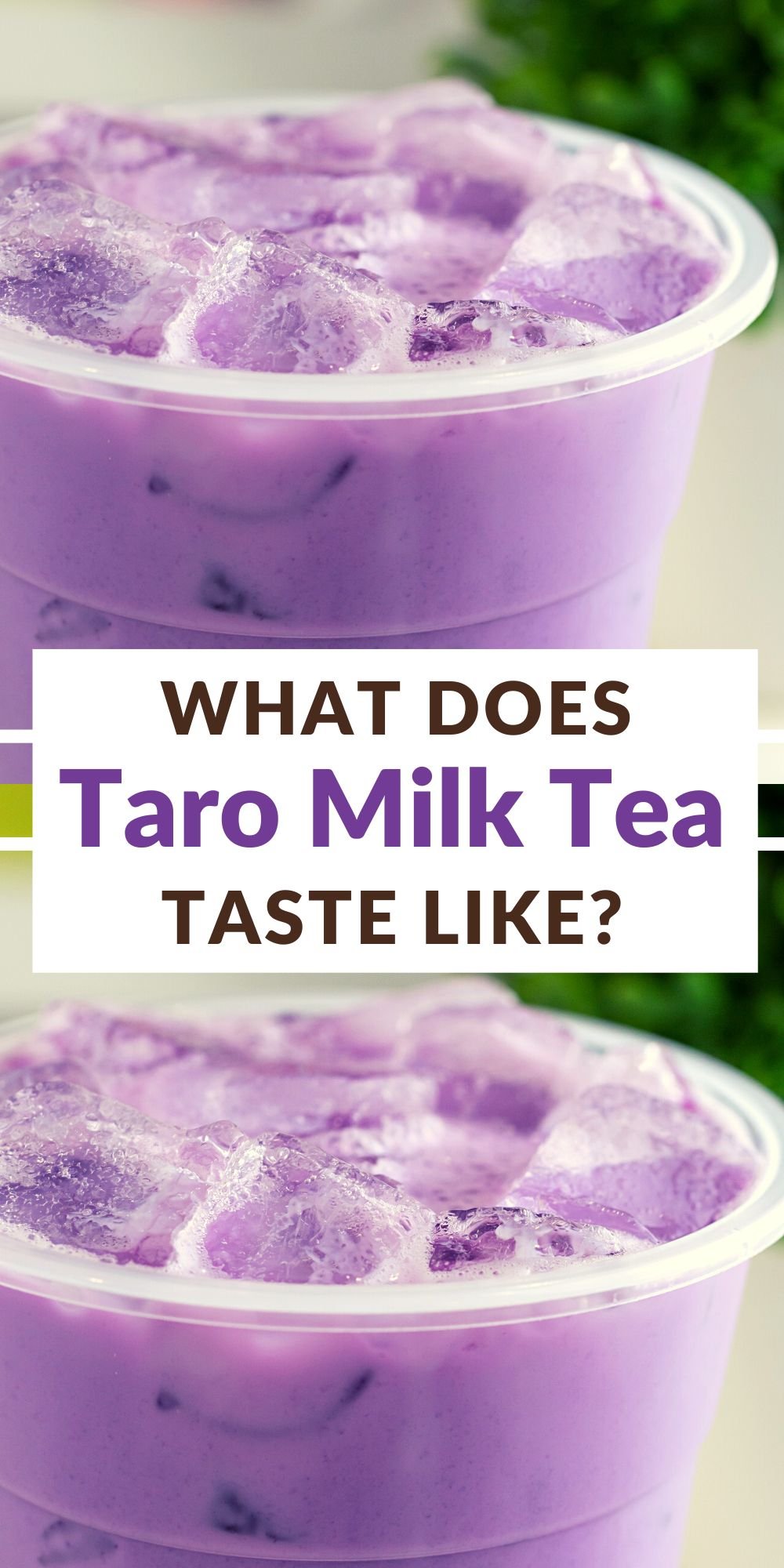

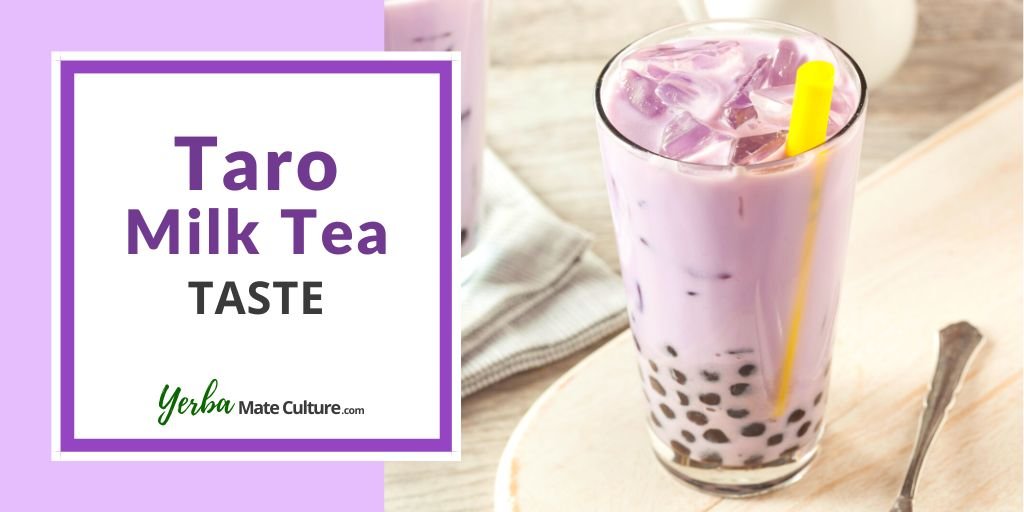
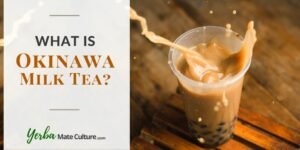

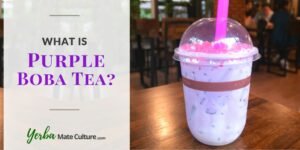
![Top 10 Best Boba Tea Places in Phoenix [2023] Best Boba in Phoenix](https://yerbamateculture.b-cdn.net/wp-content/uploads/2023/01/Best-Boba-in-Phoenix-300x150.jpg)